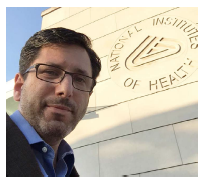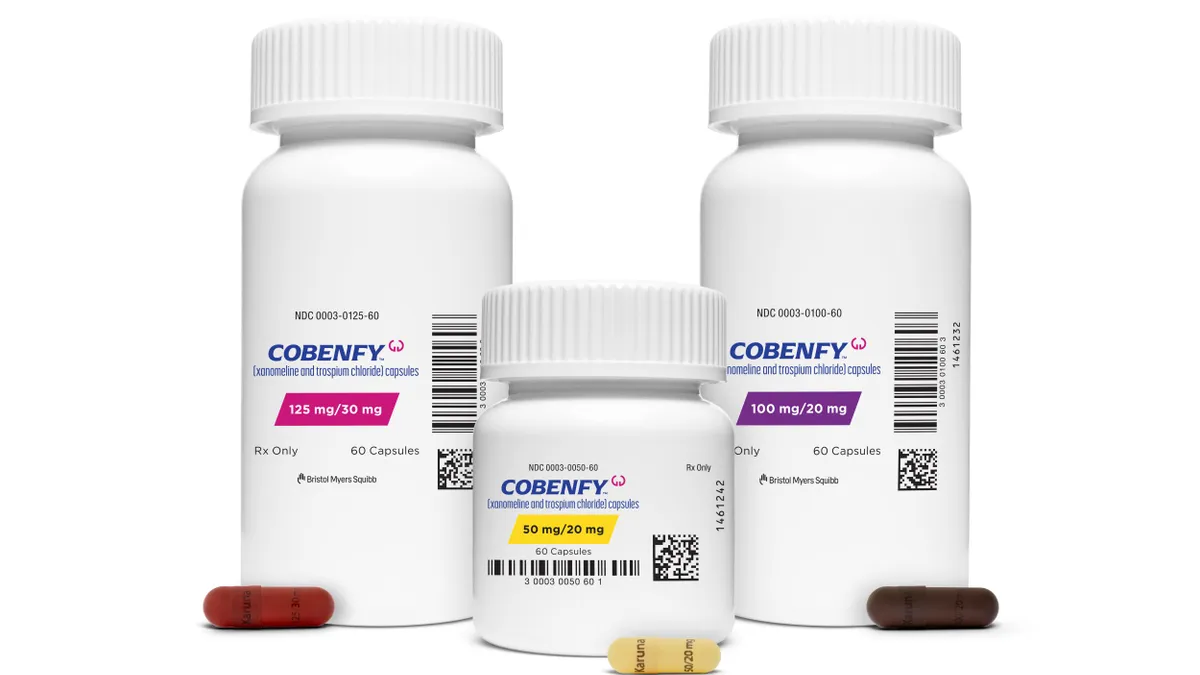 Craig Lipset
Craig Lipset
Title: Former Head of Clinical Innovation
Company: Pfizer
Industry awards: PharmaVOICE 100; PE’s Emerging Leaders; CenterWatch Top Innovators; AlleyWatch Who’s Who in eHealth
Industry awards: DIA Outstanding Service Award
Associations:,People-Centered Research Foundation, board; MedStar Health Research Institute, board; Foundation for Sarcoidosis Research, board
Twitter: @CraigLipset
Craig Lipset is regarded as a visionary leader who is dedicated to transforming some of the most challenging issues in healthcare. Craig is passionately committed to revolutionizing the role patients play in clinical research; the goal is to share health data and for patients to become true collaborators in uncovering new medical breakthroughs.
His focus on patient engagement, patient centricity, 21st century digital clinical trials, and collaborations with industry consortia, federal agencies, and technology companies are just a few examples of where he is making huge impact.
At Pfizer, he formed and executed on his vision of clinical innovation. In 2012, he led Pfizer to become the first pharmaceutical company to attempt a fully decentralized, blinded/randomized digital clinical trial. He led the launch of the “Pfizer Link — Clinical Trial Alumni Community," the industry’s first online post-trial relationships and communications platform with study participants. He pioneered the notion of returning deliverables to patients by making patient-friendly summaries of study results available to participants as well as the first experiments returning individual patient data to clinical  trial volunteers. Another key initiative that Craig designed and sponsored was Pfizer mClinical, a comprehensive mobile platform for clinical trial participants. In everything he has done, the objective is to improve the clinical trial experience for every patient.
trial volunteers. Another key initiative that Craig designed and sponsored was Pfizer mClinical, a comprehensive mobile platform for clinical trial participants. In everything he has done, the objective is to improve the clinical trial experience for every patient.
Craig also served on the founding operations committee of TransCelerate. He currently serves on the boards for the Foundation for Sarcoidosis Research, the MedStar Health Research Institute, and the People-Centered Research Foundation, with responsibility for the PCORnet national health data network. Craig also serves on the editorial board for Therapeutic Innovation and Regulatory Science.
Craig recently left Pfizer to begin the next chapter of his innovative journey. That journey will inevitably lead to continuing disruptive innovation for the benefit of patients everywhere.
PV: At Pfizer you were head of clinical innovation. Was this a role you carved out for yourself?
Lipset: I’ve written the job descriptions for most of my favorite jobs and that included clinical innovation in R&D at Pfizer. This was a time when the company was undergoing significant transformation of our development organization and shifting to a model that was heavily outsourced. My pitch at that time was that we can outsource execution but we can’t outsource the strategy and innovation around what the future needs to look like.
With that, we were able to create a small internal discipline at a time when large parts of the development organization were being moved externally. The first part of my journey with Pfizer was setting the agenda and promoting the vision externally and internally. The areas of focus that we carved out reflected the areas that I was passionate about but also where we did not have internal business owners — patient engagement and experience, digital development, collaborations and consortia, and partnering to embed research within healthcare settings. In time we reached a turning point and these competencies became part of how we do our business — electronic informed consent, patient engagement insights in every development program, and so on.
PV: What drew you to be an early adopter of technologies that are now ubiquitous?
Lipset: I love tracking data, intelligence. and trends. I don’t believe there’s some secret solution that nobody else is going to find. Many of the innovative solutions we’re looking for are based on mashups.
The value I bring is creating an environment where innovators and entrepreneurs can connect and share in a trusted way to make solutions exponentially stronger. For the REMOTEstudy that I helped design over a decade ago, we didn’t create new technology. We created a connective layer between many things that already existed, and by putting those things together in fresh ways, we were able to create something new.
When I look at the ecosystem today, there is so much enthusiasm and activity to try to attempt variations of the remote study that we carried out. One of the things I’m most proud of from that project was our spirit of transparency. We shared everything that we could throughout the journey and afterward with the hope that by carrying the ball down the field others would pick it up from there and continue sharing toward the goal line.
There are other things that I’m proud of that were less visible than the REMOTE trial, much of which is themed around the concept of deliverables for patients and research participants. We constructed a process that provides patient-friendly summaries of study results back to patients and individual data back to research participants; the latter concept is still in an early stage and I’m excited to watch as this movement continues to grow.
PV: How do you envision digital further changing the ecosystem of clinical trials?
Lipset: What energizes me about digital is using it to empower patients to participate in new ways. In that context, digital could improve how patients are able to access and control their health data and share it into research programs or how patients can use digital to participate in trials because the studies are more accessible. Going forward, the end-to-end digital trial starts with how studies are designed from the ground up. It’s almost impossible to take an existing protocol and throw it into the digital world and expect everything to make sense. The process requires teams to be committed to digital before day zero and design the protocol with digital in mind. I am starting to see digital come into play right from the beginning with teams using data in better and smarter ways to design and execute their studies.
PV: Another one of the innovations you were involved with was TransCelerate. Tell me how this evolved?
Lipset: I was among the nervous ones when we first sat at the table with leaders from various pharmaceutical companies talking about what TransCelerate could be. I had seen a graveyard of consortia from years past that were well-intentioned, they would start with a burst of enthusiasm and then sputter out. The key for TransCelerate was going to be leadership engagement. So we created a model that included subject matter experts from different companies who engaged on specific projects and worked with their peers at other companies who were facing the same day-to-day challenges. We also had top executives from R&D organizations from different companies staying engaged as active board members, which is really what has kept TransCelerate alive.
PV: What are the limiting factors that keep companies from thinking differently about developing drugs?
Lipset: The limiters aren’t technology or regulators. Too often the issue is cultural, it’s risk-aversion. For example, there are studies where e-consent is used but the trial continues to use paper consent as well. I see studies where a digital endpoint is being used but the old endpoints are kept just in case. So digital is just getting piled on, which creates more burdens than solutions. We have to validate what we’re doing, we have to commit to it, and we have to move forward. Too often inside a development organization innovation becomes additional work. Leaders need to step up with the resources to help these teams succeed.
PV: Who needs to influence the heads of these organizations to start to think more innovatively?
Lipset: The pressure will come from two different directions. One is peer pressure and the other from patients. Many leaders have always been highly competitive, and seeing headlines and movement from their peers is very motivating. But today, pharmaceutical executives are listening to patients and the more they do this, the more opportunities will be created to create positive change for patients.
PV: How do you inspire others to reach their personal and professional goals?
Lipset: I’ve never considered managing others to be my strength, rather I lead with transparency and sharing my inspiration with others. I realize that my passion and enthusiasm for certain opportunities can turn some people off. Fortunately, there are many who enjoy sharing in that inspiration and get just as excited as I do. My team had very little turn over through the years, and those who stayed on the journey with me did it because we shared our inspiration.
PV: What do you think the future of the life-sciences industry will be?
Lipset: I’m always going to start with engaged and empowered patients who have unprecedented access to their electronic health data and can share it as and when they wish. The other trend that I would layer on top of this are master protocols, bucket trials, and studies that can test multiple drugs concurrently. When we look at some of the amazing national observational studies that are emerging today, such as Project Baseline from Verily or the NIH All of Us study, we see a trend emerging where organizations are trying to enroll “all-comers" to share vast amounts data. To me, the future is breaking the model of incremental redundant studies and looking instead at nationwide observational studies with vast amounts of data as the highway on which our interventional trials will be run in the future. And because they’re digital first, the idea of the patient sharing data from home or the clinic is already baked in.
PV: What words of wisdom do you have for future leaders?
Lipset: As leaders, it’s okay to bring empathy. It’s not a weakness. It simply means we’re thinking like our customers. We’re getting into their shoes and we’re understanding their journeys. Then show your passion in ways that let others decide if they want to join you on that journey. Don’t be afraid that you can’t reveal more of you than what a business suit may allow. I would encourage future leaders to embrace and share their passion.
PV: What would you like your legacy to be?
Lipset: Personally, I self-identify as a patient as much as I do a drug developer, technologist, or innovator. We can no longer live with fictional boundaries and deny that we are all patients and caregivers. I aspire to create a legacy that transforms how patients participate in research. But I also want that transformation to include all of us in the clinical research community being able to embrace and leverage our role as patients and caregivers to whatever extent each of us is comfortable.
Professionally, I want to leave a legacy of democratization in clinical research. We have too many silos, which may include access to information for patients, or access for innovators to engage with trial opportunities. By shattering those silos we will be able to fully leverage the amazing new solutions that will transform medicine development for patients. (PV)



















